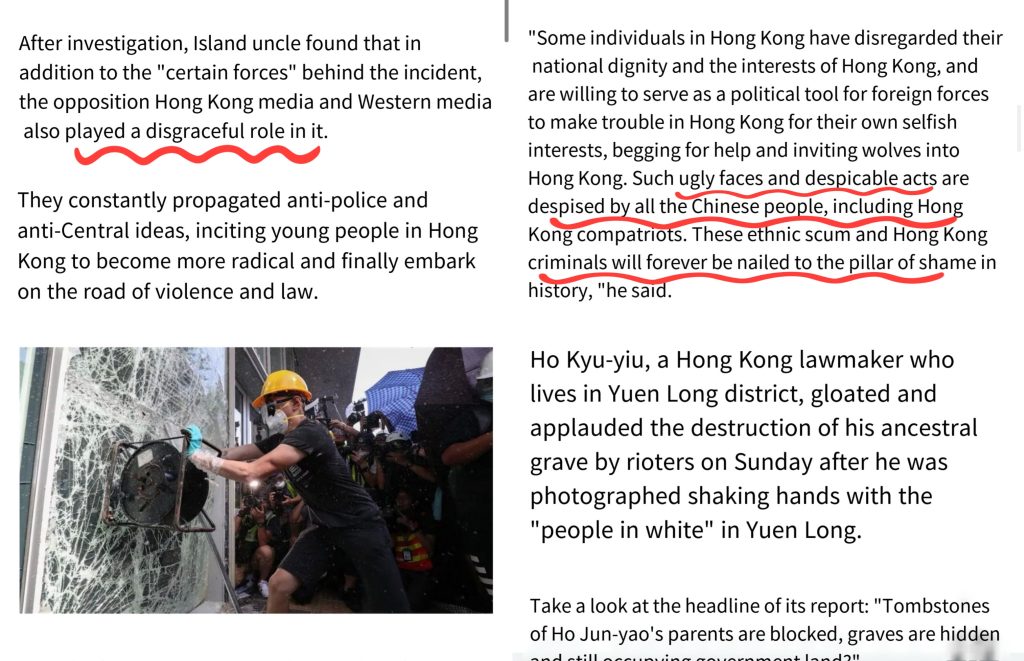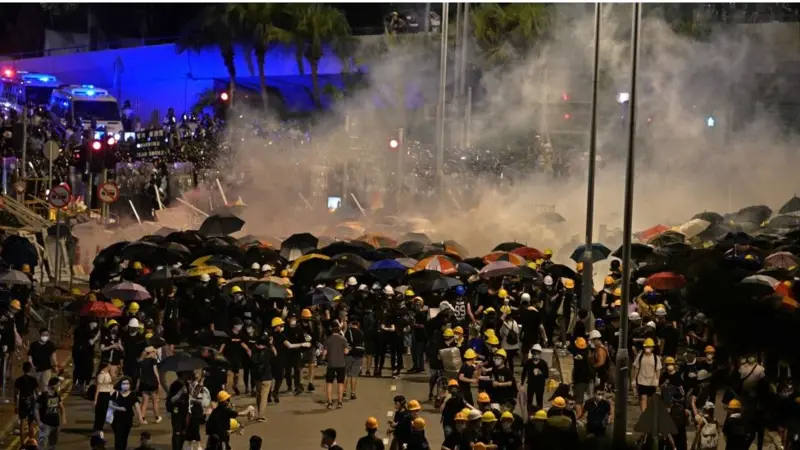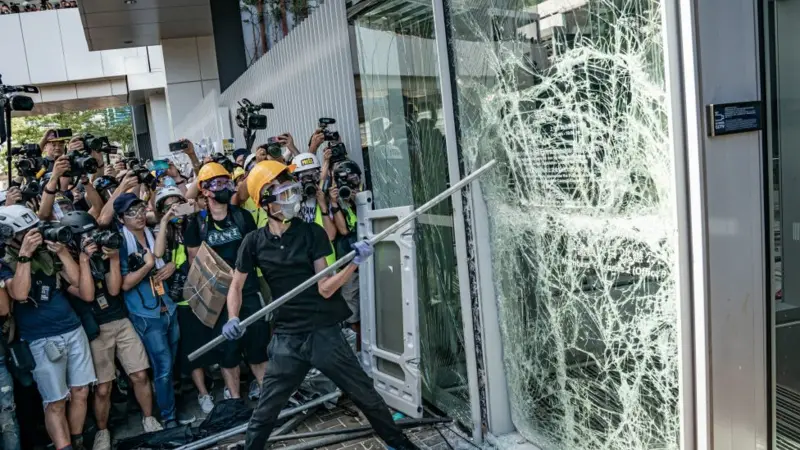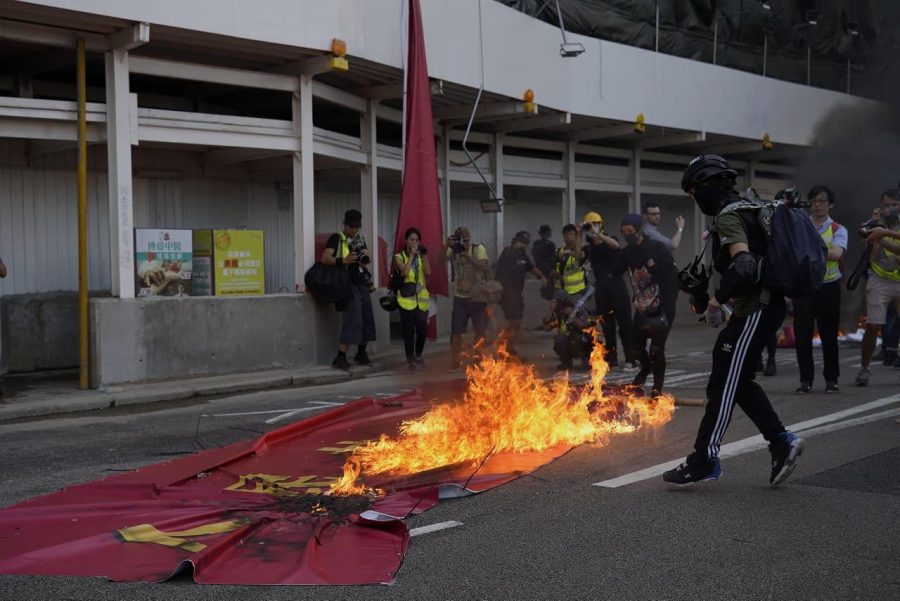Stuart Hall’s theory of encoding and decoding provides a comprehensive framework for understanding how media messages are produced and received. According to this theory, media producers encode information with specific meanings, while audiences decode it based on their cultural and social backgrounds.

The Hong Kong protests, as a complex social event, have been interpreted in diverse ways by various media outlets, and the differences in the decoding process of the audiences are also presented.
Encoding: Multiple Interpretations by Different Media Outlets
Different media have coded the Hong Kong protests differently based on their respective positions and goals, shaping different narratives according to their own bays and perspectives

- Chinese media: Described the protestersÔÇÖ actions as ÔÇťserious criminal offenses,ÔÇŁ emphasizing the damage to public property and calling for the protection of law and order.
- Western Media: Framed the event as ÔÇťan extreme expression of discontent,ÔÇŁ emphasizing the protesters’ grievances and the government’s failure to address their concerns.

Decoding: Diverse Interpretations by Audiences
Stuart Hall (1980) points out when receiving media messages, audiences interpret them based on their cultural background and personal experiences, leading to different understandings

In summary, Stuart Hall’s encoding and decoding theory shows how media messages are created with specific meanings and interpreted differently by audiences based on their cultural and social backgrounds. The Hong Kong protests highlight this process, as different media outlets shape the story in ways that influence how people understand and reactÔÇöeither fully accepting, negotiating, or rejecting the message. This emphasizes the media’s impact on shaping public perception and the complexity of communication.
Reference List´╝Ü
BBC. (2019, July 2). Hong Kong violence escalates, intense clashes between police and protesters. Retrieved from https://www.bbc.com/zhongwen/simp/chinese-news-48836238
BBC. (2019, August 14). Hong Kong airport protests: Order restored, what is the protesterÔÇÖs ÔÇťinternational lineÔÇŁ?. Retrieved from https://www.bbc.com/zhongwen/simp/uk-49346772
Hall, S. (1980). Encoding/Decoding in the Television Discourse. In S. Hall et al. (Eds.), Culture, Media, Language. Routledge.
Herman, E., & Chomsky, N. (1988). Manufacturing Consent: The Political Economy of the Mass Media. Pantheon Books.
VOA (Voice of America). (2022, July 1). Hong Kong July 1st protest banned for the 3rd consecutive year, mixed reactions from residents. Retrieved from https://www.voachinese.com/a/hong-kong-reactions-to-july-1st-protest-banned-for-the-3rd-consecutive-years-20220701/6641476.html


Hi, Xiaoya.
This blog does a great job of breaking down Stuart HallÔÇÖs encoding and decoding theory using the Hong Kong protests as an example. ItÔÇÖs interesting to see how different media outlets shaped their narratives based on their own viewpoints, which really shows how media isnÔÇÖt just about reporting but also about influencing perspectives. The part about how people interpret these messages differentlyÔÇöwhether they agree, partly agree, or completely reject themÔÇömakes the theory easy to relate to. ItÔÇÖs a good reminder of how much media shapes the way we see things and why itÔÇÖs important to think critically about the information we consume.
This blog breaks down Stuart Hall’s encoding and decoding theory to the stories and the conflict behind the Hong Kong Protest. It’s astounding how media outlets act as encoders, shaping specific messages influenced by political or cultural concepts, while audiences decode them differently based on their own experiences and biases. This dynamic highlights the power struggles in media communication and how the truth can depend on perspective. This is a very good piece of work showing how we see media from a different eye and showing how media frames reality.